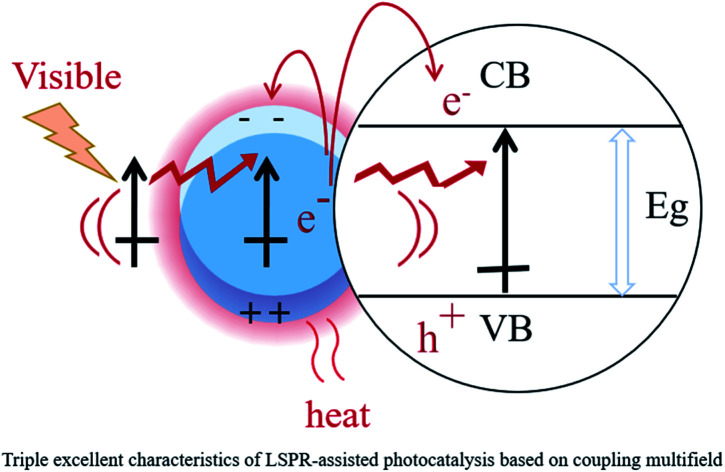- Record: found
- Abstract: found
- Article: found
Review on LSPR assisted photocatalysis: effects of physical fields and opportunities in multifield decoupling

Read this article at
Abstract
Since nano scale local surface plasmon resonance (LSPR) can broaden the visible absorption region, enhance the local electromagnetic field and produce a thermal effect simultaneously, the appropriate utilization of the LSPR effect is a noteworthy research direction towards visible light driven photocatalysts with high efficiency and low cost. In this study, the influence mechanism of the optical, electric, magnetic, and thermal physical fields on the photocatalytic efficiency of the LSPR system is for the first time reviewed, based on which the research bottlenecks of this method including the accurate predesign and regulation of the photocatalyst, the interpretation of electron movement and energy transfer mechanism, are specifically analyzed. Due to the micro-nano localization of LSPR, auxiliary methods are needed to reflect the micro electromagnetic and temperature field distribution which are otherwise formidable to measure experimentally. Alternatively, numerical methods with decoupling calculations of nano-scale physical fields are necessary to develop. Therefore, the development potential of different numerical simulation methods including mainstream FDTD, FEM and DDA is subsequently expounded, providing opportunities in resolving the bottleneck issues associated with photocatalysis. It is worth mentioning that although many important advances have been achieved in the preparation and application of LSPR assisted photocatalysts, the convincing function mechanism of LSPR is still lacking due to its multifield synergistic enhancement effect.
Abstract
The review of synergistic influence of optical, electric, magnetic, and thermal physical fields on the LSPR-assisted photocatalysis. Numerical methods with nano-scale visualization and decoupling calculations are specifically discussed.

Related collections
Most cited references154
- Record: found
- Abstract: found
- Article: not found
Calculated absorption and scattering properties of gold nanoparticles of different size, shape, and composition: applications in biological imaging and biomedicine.
- Record: found
- Abstract: found
- Article: not found
Visible-light photocatalysis in nitrogen-doped titanium oxides.
- Record: found
- Abstract: not found
- Article: not found